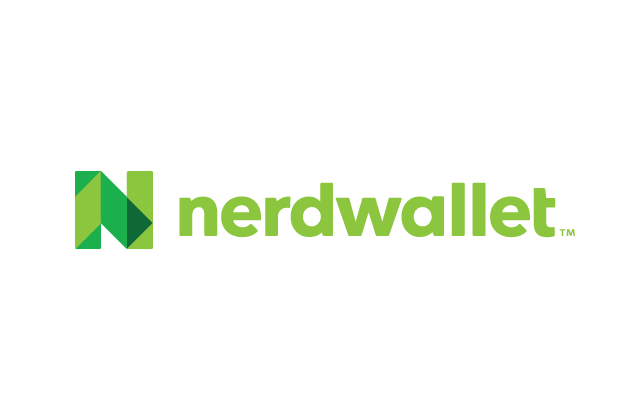In Canada, financial institutions accept monetary deposits, and facilitate the transfer and withdrawal of funds. Many also provide investment products, mortgages and other forms of credit to their customers and offer banking, investment and credit services to businesses.
Why are financial institutions important?
Banks and other types of financial institutions are more than just places for you to park your money. They offer products and support to help Canadians save for short- and long-term goals, as well as credit and loans to help them pursue homeownership or entrepreneurship, ultimately helping grow the economy.
Types of financial institutions in Canada
1. Big Six Banks
Perhaps the most well-known financial institutions in Canada — and also the largest — are the “Big Six.” TD Bank and RBC top the chart with nearly $1.92 trillion in assets as of 2022[1].
- Canadian Imperial Bank of Commerce (CIBC).
- Royal Bank of Canada (RBC).
- Bank of Nova Scotia (Scotiabank).
- Bank of Montreal (BMO).
- Toronto-Dominion (TD) Bank.
- National Bank of Canada.
These six banks, along with a number of other mid-sized financial institutions, are known as Schedule I banks — Canadian-incorporated domestic banks, governed by the Bank Act and regulated by the Office of the Superintendent of Financial Institutions (OSFI).
2. Credit unions
Credit unions are financial co-operatives that provide their customers — known as members — with the same services as available at banks, including savings and chequing accounts, mortgages, investments and insurance. The difference is that credit unions operate on a not-for-profit basis and distribute any profits or dividends back to members.
Credit unions, which are located across Canada, are also often involved in their communities via initiatives like scholarships and donations. Saskatchewan-based Innovation Credit Union and Conexus Credit Union are known for their providing community support through grants, scholarships and grants.
3. Caisses populaires
Operating on a not-for-profit basis like credit unions, caisses populaires offer members a full suite of financial products and services, including personal and business accounts, insurance, mortgages and investments. They also offer members the chance to vote in their annual general meetings and elect the board of directors and officers.
Caisses populaires are located in francophone jurisdictions of Canada and, along with credit unions, are often regulated under provincial legislation. In Ontario, for example, they are governed by the Financial Services Regulatory Authority (FSRA) under the Credit Unions and Caisses Populaires Act.
4. Online-only banks, digital banks or “neo banks”
Online banks have become more prevalent in recent years in Canada, offering banking options similar to their bricks-and-mortar counterparts, such as chequing and savings accounts, registered accounts, and in some cases, mortgages and investments. Some online banks also offer lower or no-fee account options.
The majority of digital banks operating in Canada are affiliated with more traditional banks, credit unions or financial institutions. Canadian online banks include:
- Manulife Bank.
- Simplii Financial (owned by CIBC).
- Motive Financial (a division of Canadian Western Bank).
- Alterna Bank (a subsidiary of Alterna Savings and Credit Union).
- Tangerine Bank (a subsidiary of Scotiabank).
- EQ Bank (owned by Equitable Bank).
Also launching in the last two years in the online-only space are “neo banks” — completely virtual financial institutions such as Wealthsimple Cash and Neo Financial, a fintech company that offers access to e-transfers, savings accounts, bill payments and credit cards through its app or website.
Although these providers are not regulated as banks by OSFI, the accounts offered by EQ Bank and Tangerine are held in trust by Canada Deposit Insurance Corporation (CDIC) member institutions and are eligible for deposit insurance protection.
Characteristics of a high-quality financial institution
When choosing a financial institution, look for the following traits and features to make sure your money is protected and to help you choose the best option for your needs.
Proper authorization, accreditation/governance
Because they’re governed by OSFI, federally regulated financial institutions must follow specific guidelines, including capital adequacy requirements, accountancy standards, large exposure limits and sound business and financial practices, including corporate governance.
Credit unions and caisses populaires regulated by the FSRA are also required to uphold a required standard of conduct and maintain adequate liquidity and strong capital reserves.
Deposit insurance
Eligible deposits held in financial institutions in Canada that are members of the CDIC are insured (up to $100,000) in the event of bank failure. More than 80 institutions are members of CDIC, including the big five banks. Newer financial institutions that aren’t structured as banks often hold their customers’ funds in trust with a CDIC member institution, but it’s crucial to read the fine print before signing up to make sure your savings will be covered.
Provincially regulated credit unions also offer deposit insurance protection. In Ontario, for example, the insurable deposits of credit union and caisse populaire members are protected through the FSRA’s Deposit Insurance Reserve Fund.
Convenience
Especially since the onset of the pandemic, many people have begun to prefer the ease of carrying out banking transactions from the comfort of home or on the go from their phones. In 2022, nearly eight out of ten Canadians used digital channels to carry out their banking transactions, according to the Canadian Bankers Association (CBA), and the average bank customer visited their bank’s website five times as often as their branch.
While banking preferences are individual — some Canadians may prefer to meet with a financial advisor or make a particular transaction in person, while others may favour entirely online services — the move towards increased digital innovation among all players has been undeniable. Large financial institutions have ramped up their digital offerings via mobile apps that allow for transactions like virtual cheque deposit and contactless pay, and many offer new AI-powered advice and forecasting tools.
Services, features and account offerings
While the number of services or account types a bank provides doesn’t indicate the level of quality it offers, most banks in Canada provide a wide range of financial services and products. According to CBA data, more than 40 banks in Canada offer financial products and services to consumers, including loans, credit cards, investments and over 100 different bank account packages.
Some financial institutions choose to specialize their services in certain areas, such as small businesses or customers within a certain region.
When reviewing your options before choosing a financial institution, make sure it offers the services and account types that match your needs.
Fees
Before signing up with a bank, make sure you understand the banking fees you’ll pay for your account — and if possible, how to avoid paying them. According to the Canadian Bankers Association, just over 30% of Canadians say they don’t pay any service fees, and another 45% pay up to $15 per month[2].
Most major financial institutions provide basic account options for up to $4 per month, as well as discounted or free account options for youth, students, Registered Disability Savings Plan beneficiaries, seniors and newcomers to Canada.
Article Sources
-
Wikipedia, “Big Five Banks of Canada,” accessed November 17, 2023.
-
Canadian Bankers Association, “Banks and Consumers,” accessed November 17, 2023.
DIVE EVEN DEEPER

A Guide to Common Canadian Bank Fees and Charges
Banks often charge fees for holding a bank account and using banking services. Common fees include monthly account fees, overdraft charges, wire payments and ATM fees.

Do You Need a Business Bank Account?
A business bank account allows a company or a self-employed person to perform banking transactions under a business name.

How to Open a Bank Account
You can open a bank account online, over the phone or at a branch. Make sure you have two forms of identification ready.

NerdWallet Canada’s Banking Reviews
We’ve reviewed Big Banks, credit unions and online-only banks — along with some of their most popular products — to help you understand the pros, cons and perks.

